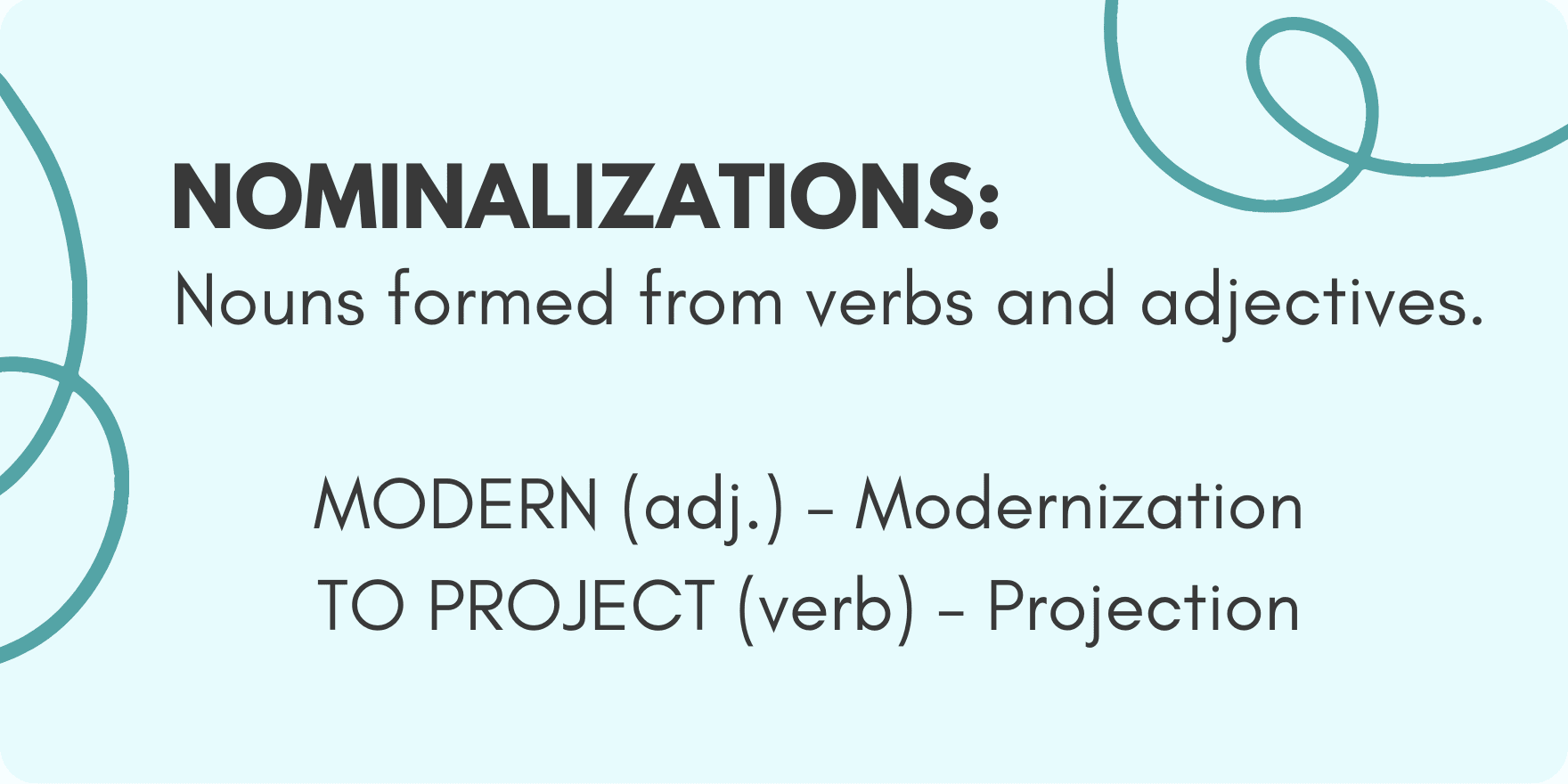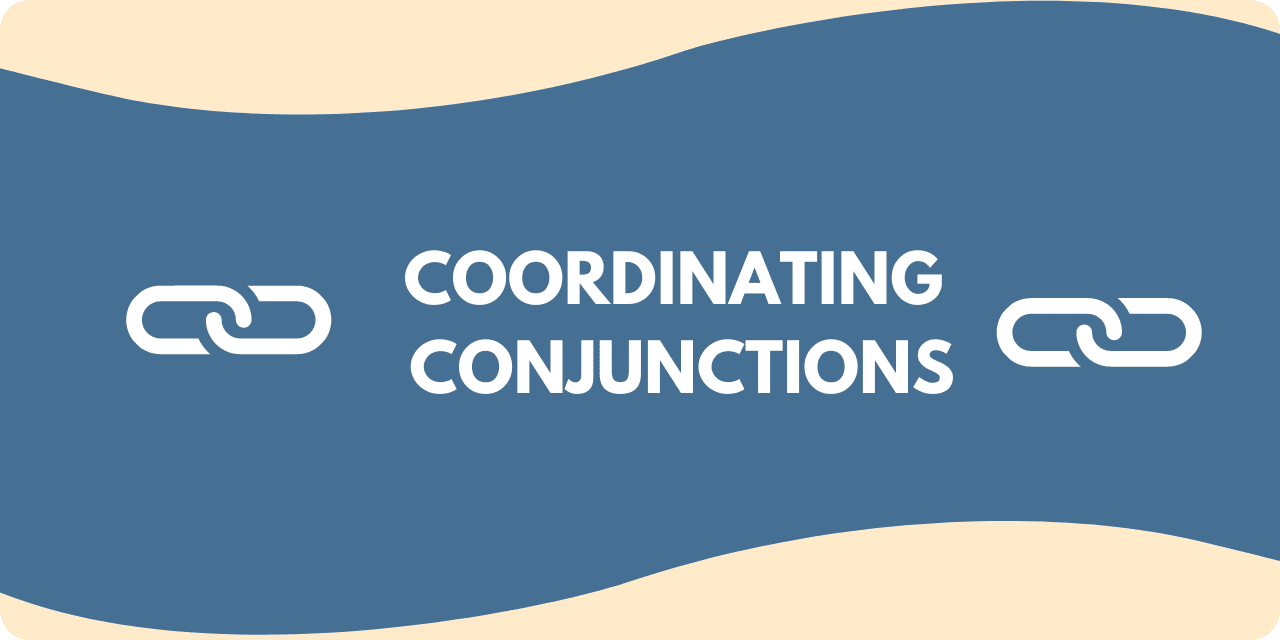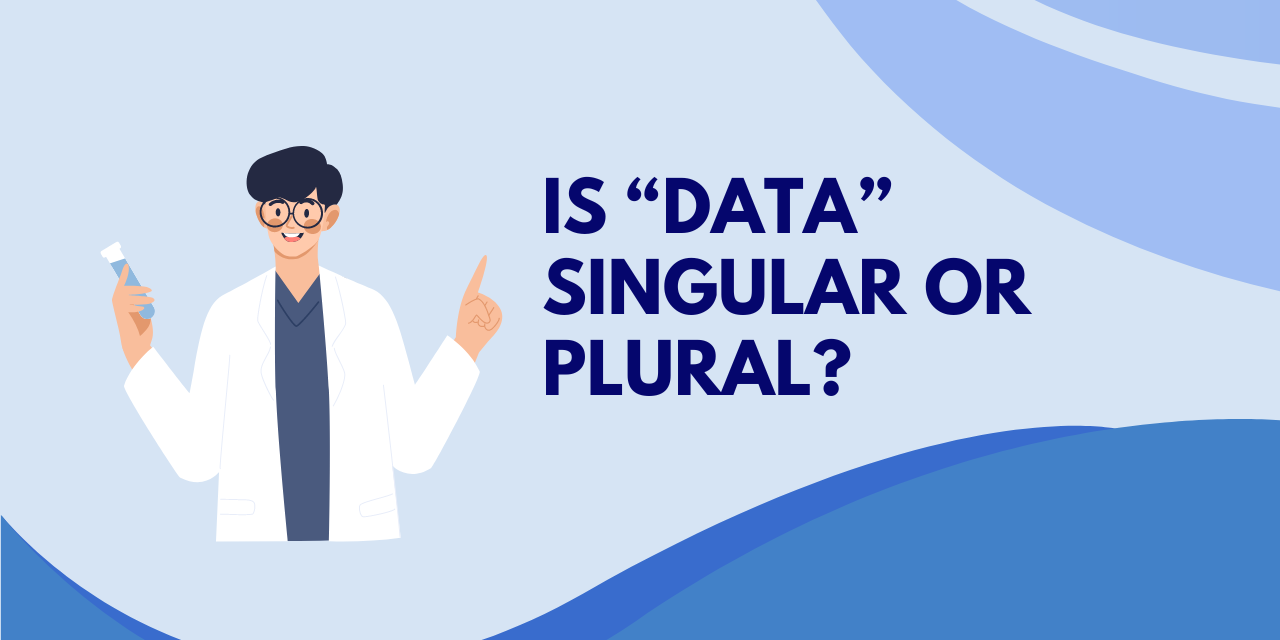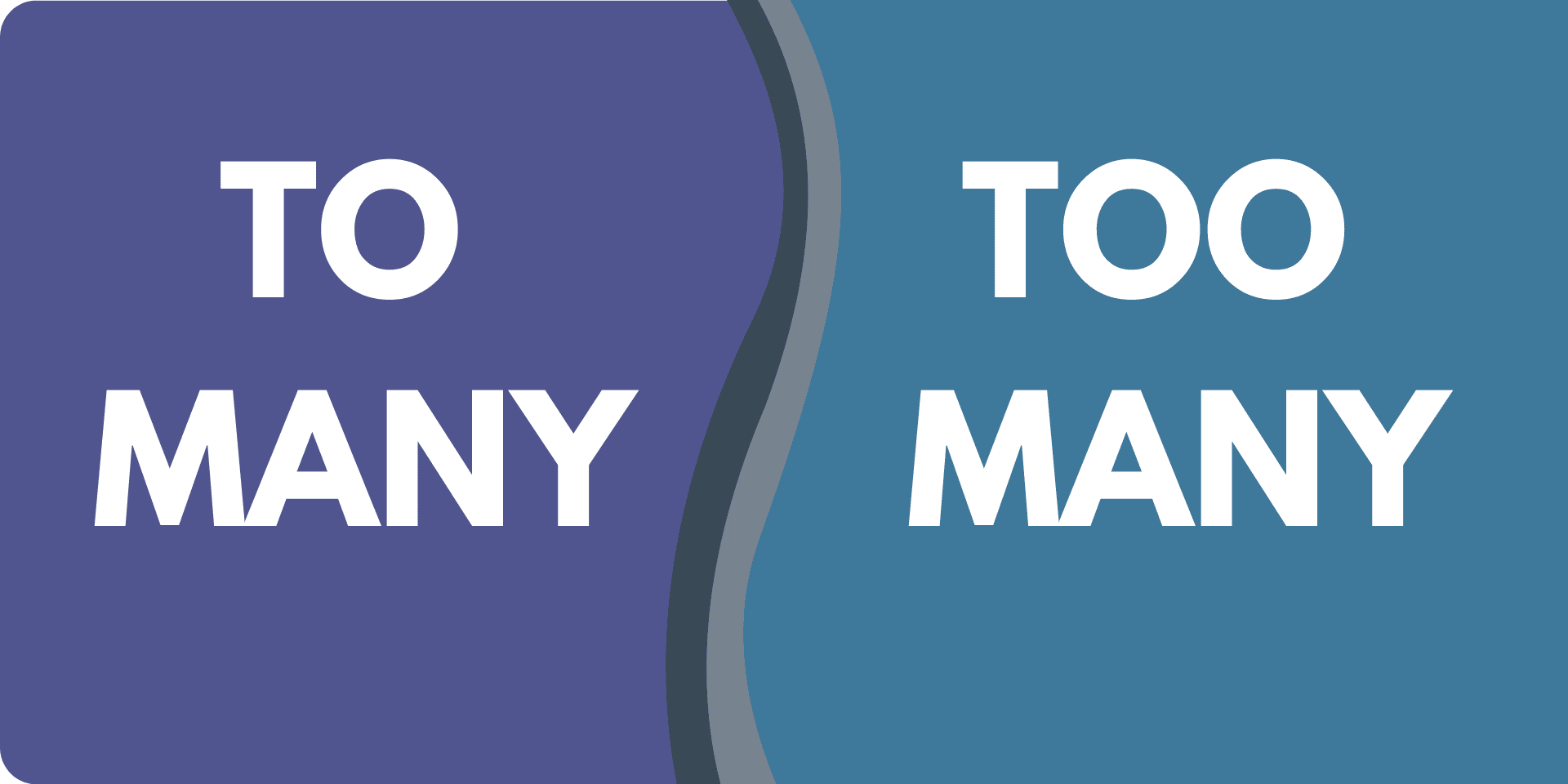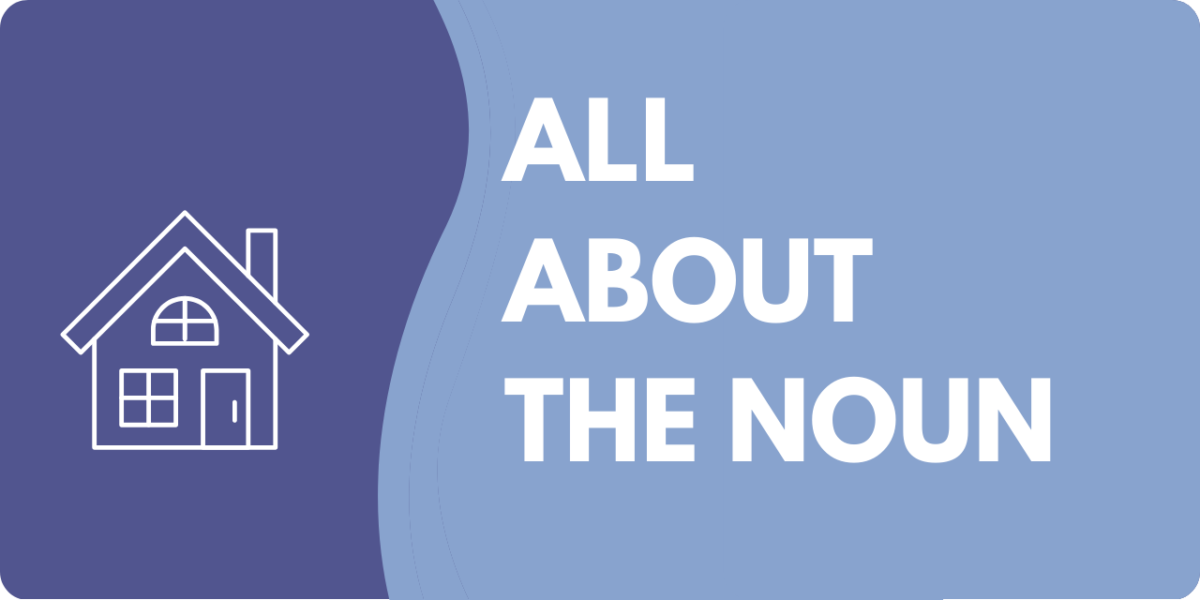
Nouns are the most common parts of speech you will encounter in your writing; however, many people need help identifying these vital pieces of sentence structure. They are a foundation for strong and grammatically correct sentences because nouns function as subjects and serve other important roles, such as the object of a prepositional phrase.
Here is a brief explanation of nouns and the different types:
- Nouns are words that name persons, places, things, and ideas.
- Concrete nouns refer to tangible nouns that people can experience using at least one of the five senses: sight, touch, smell, hearing, and taste.
- Abstract nouns are intangible ideas that humans cannot experience with the senses.
- Possessive nouns indicate ownership or a direct connection to a specific noun.
- Singular nouns represent only one person, place, thing, or idea.
- Plural nouns describe multiple people, places, things, or ideas.
- Common nouns refer to nouns generally and should be lowercase unless starting a sentence.
- Proper nouns<span data-preserver-spaces=”true”> have capitalized names, showing that they are unique, specific nouns.
- Countable nouns are noun types that can exist in quantities people can count.
- Uncountable nouns consist of many minuscule parts or exist in fluid quantities that defy counting.
- Collective nouns are singular words that describe multiple nouns forming a group or unit.
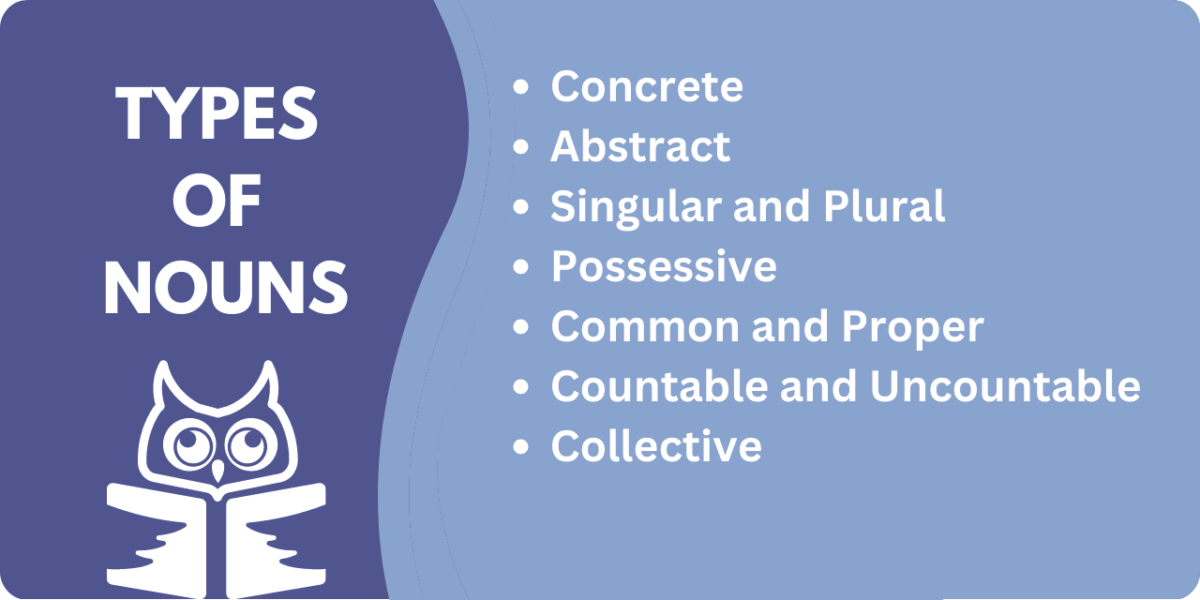
With a good understanding of nouns, it can be easier to understand how to write effective sentences. This guide serves as an in-depth analysis of nouns, offering a foray into the many different types to help you better identify them and understand the role each plays in a sentence.
The 9 Parts of Speech
The parts of speech, like many aspects of English grammar, have a lot of functions, rules, and exceptions that make it difficult for many people to understand their proper usage. However, understanding how these building blocks work is essential for crafting structurally correct sentences and conveying your intended meaning, both in writing and speech, limiting opportunities for misunderstandings or ambiguity.
To better understand certain aspects of the discussion, here is a rundown of the other parts of speech:
- Pronouns serve as stunt doubles for nouns to avoid repetition or describe unknown persons or objects.
- Adjectives describe the appearance of nouns or pronouns and clarify which kind and how many there are.
- Articles are adjectives that limit nouns, indicating whether a noun is specific or general.
- Prepositions show where nouns are or their location concerning each other; they generally deal with time and space.
- Verbs take several forms, but they either explain what a noun is doing while providing clarity for when actions take place, or they can serve as a link between a noun and an adjective that describes it.
- Adverbs provide additional information about verbs, adjectives, and even other adverbs, details about how something is done, where and when it happens, or offers a general answer for the questions “how much?” or “how long?”
- Conjunctions are words that join two or more properly formed phrases to create more advanced sentence structures.
- Interjections are exclamations or observations that are not essential but convey feelings or a sense of emotion.
We have a full article on parts of speech here.
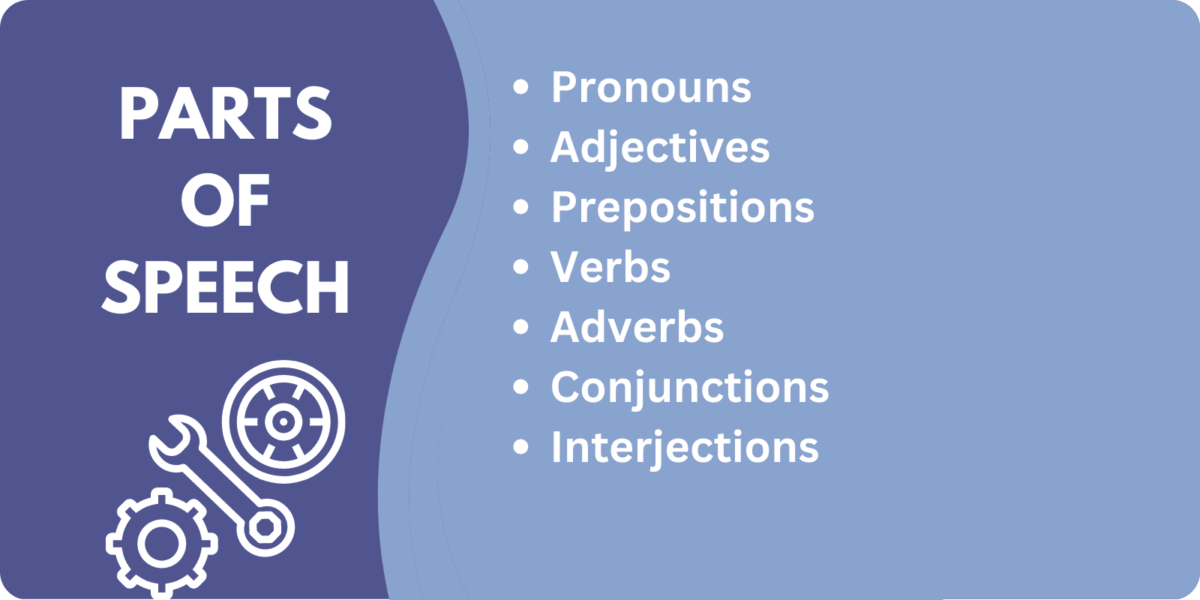
The Types of Nouns
- Nouns are words that name persons, places, things, and ideas.
While there are several types of nouns, there are two which play a significant role in their identification: concrete and abstract nouns.
Concrete
Concrete nouns refer to tangible nouns that people can experience using at least one of the five senses: sight, touch, smell, hearing, and taste. To illustrate, as you look around your current location, everything you can see, smell, touch, or hear is a noun. Anything you can eat or touch with your tongue to experience flavor is also a noun.
As a result, these are the easiest nouns to identify when differentiating parts of speech.
- Tabitha tripped over the cat but fell on the couch.
In this example, Tabitha is a person who counts as a noun. The cat is an animal, which is not a person or place, so it falls under the thing category. This is a vague word, and, in some instances, you will see it substituted for object instead; however, it can be difficult to classify a living creature as an object. The following noun, couch, does fit that description. A better way to categorize nouns could be: living things, places, objects, and ideas.
These nouns are all concrete in whichever description you prefer because they have forms you can see with your eyes. In addition, you could touch or smell any of them. You could likely hear Tabitha and the cat, and if you had the inclination and strong teeth, you could taste any of the three.
However, it only takes the ability to perform a single one of the senses on a noun to make it concrete.
- The wind brought music to Kegan’s ears.
There are only seven words in this sentence, but four are nouns. Were they the ones that you expected? Let’s break them down to understand what makes them concrete.
Wind fits under the umbrella of a thing, and while you cannot see the wind, you can certainly feel it, smell it, and sometimes even hear it. Music might sound like an idea, but the senses can experience it; you can hear music, so it fits under the category: thing.
Kegan is the root of the next word and is a person. However, the apostrophe “s” is there to let you know that those ears belong to him, making Kegan’s a possessive noun, which shows ownership or an indication of something made by another person, such as footprints. Those ears are visible at the very least, so those are also concrete.
Abstract
Abstract nouns need to be clarified when learning grammar, as people cannot experience them with any one of the five senses. In fact, the word idea itself is an abstract noun. Some other examples are: friendship, time, boredom, compassion, luck, embarrassment, love, and freedom.
While people can experience these concepts, no one can see them. Some people try to argue that they can see friendship or time, but those are feelings. You may be able to see two friends or a clock, but you can’t see the ideas that they represent. Similarly, you can see a person with an embarrassed expression on their face, but you can’t see the actual embarrassment as it is an idea used to describe that feeling.
- Mary knew that she had to discover the truth if she wanted justice.
Justice is a belief in appropriate punishment for wrongdoings. While you can witness an act that people consider justice, that is an action, not a noun; plus, the idea of justice varies from person to person, making it abstract.
The same is valid for truth; you can hear words, but you cannot see the truth itself, and one person’s idea of it can differ from another’s. As the expression goes, there are two sides to every story.
- When Alester felt the tell-tale tingle in his left arm, followed by intense pain in his chest, he experienced sudden fear of his impending fate.
In this scenario, Alester has a lot of abstract feelings like a tingle, pain, and fear. Fate is the idea of a preordained destiny, which some people believe and others do not.
Singular and Plural
Singular nouns represent a single person, place, thing, or idea. Some examples are: cat, apple, boat, girl, cup, and horse.
Plural nouns are modified versions of singular nouns showing that there is more than one. The most common way to change a noun from singular to plural is to add an s: cats, apples, boats, girls, cups, horses.
As simple as that seems, English is full of irregular words and inconsistencies that make things more difficult. There are special rules for singular nouns ending in –s, –ss, –sh, –ch, –x, or –z. These words add an –es:
bus = buses boss = bosses lunch = lunches box = boxes waltz = waltzes
Words ending with a consonant and y drop that end letter and replace it with -ies:
penny = pennies baby = babies lady = ladies
Note: There are irregular nouns that change form or even stay the same when shifting from singular to plural.
For example, man becomes men, sheep remains sheep, and child transforms into children. This may be because English absorbs many words from other languages and sometimes brings foreign rules along.
Possessive
We discussed this type with the Kegan example in the first section, but a possessive noun indicates ownership or that something connects directly connected to a specific noun. There are two ways to show possession, depending on whether the noun is singular or plural.
Singular nouns and plural words that do not end in s take an apostrophe + s to show that it is possessive.
- The zombie’s teeth bit into Kevin’s arm.
Kevin becomes a possessive noun with the added ’s, clarifying that the arm belongs to him, not the singular noun zombie. Of course, zombie becomes possessive to show ownership of the teeth that have likely infected poor Kevin.
- Chris’s backpack fell into the toilet.
Here we have a situation where the name Chris, a singular noun, ends in an s. Even though it may look strange and cause someone to sound like a stuttering snake when pronouncing it, it still gets the added apostrophe + s.
However, this is a matter of much debate, as some popular writing styles allow only an apostrophe so that the singular possessive ending in s appears like this: Chris’ backpack. This is technically improper, as this is how we form a plural possessive that ends in s.
To clarify, a plural noun that ends in s becomes possessive by adding only an apostrophe.
- Pamela accidentally sucked up the cats’ toys with her vacuum.
The placement of the apostrophe is critical because placing it at the end shows that there were toys belonging to more than one cat. An apostrophe after the t would indicate that all the toys belonged to a single animal.
Common and Proper
A common noun represent any person, place, thing, or idea in general, while proper nouns are specific ones that receive a capitalized name to set them apart.
To illustrate, here are examples of common nouns, along with an example of a related proper noun:
Common Proper
boy Steve Davis
cat Claws the Cat
store Walmart
house Riverwood Estate
shoe Air Jordan
park Central Park
book The Eye of the World
war World War II
Notice that the common noun boy could refer to any boy, but Steve Davis is a particular boy, and there is little doubt which boy that is. Notice that even though the proper nouns have multiple words, they still count as a single noun since they refer to a particular person, place, thing, or idea.
Remember, if it has an official name, it is a proper noun, and the significant words get capitalized.
Countable and Uncountable
Some nouns are easy to count; children even use nouns such as apples, coins, dots, fish, and other easily recognizable items to learn how. If you can measure a specific number of a noun, it is considered a countable noun.
However, we cannot count some things. For example, can you ask a friend to bring you four water? If you did, the person would probably be confused or think you meant water bottles, which people can count.
Water is an example of an uncountable noun, usually made up of different parts, but considered a singular noun. Other examples are garbage, cheese, electricity, sugar, rice, butter, advice, luggage, milk, currency and many abstract nouns such as happiness, music, and love.
These unique words take singular verbs, although while you can add limits to the items to change the concept (a bag of garbage or a gallon of milk), making numerical requests for those items without adjusting the sentence is awkward.
- Can you give me three advice?
- I want four electricity, please.
Instead, words like some or more are more appropriate.
- Can you give me some advice?
- I need more electricity to power this console.
Collective
Like uncountable nouns, collective nouns use singular words to refer to multiple people. They generally take a singular verb unless made plural, in which case the verb will match.
Here are a few examples of collective nouns: committee, band, herd, wad, congregation, family, class, and choir.
- The committee meets every Thursday.
- The families enjoy television after dinner.
The Bottom Line
It is easy to make a mistake with nouns because there are so many different types and a wide variety of irregular versions that transition differently than expected. Identifying your problem areas and focusing on those will help improve your writing, especially when it comes to punctuation, subject/verb agreement, and conjugation. Understanding the proper use of nouns can help elevate your writing to new levels!



